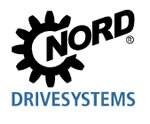Filtering out Common Mode Noise in Congested Environments with Monolithic EMI filters
Carbon and Ford Expand Collaboration to Digitally Manufacture New Durable, End-Use Parts
Three Reasons Why Manufacturers Should Work With Secondary Sourcing Partners
Taking an Independent Path: Strategies for Low Risk Sourcing of Components in a Constrained Market
Flexible Shafts in Aerospace Applications
3D Printing: Cutting Edge Technology for the Circular Economy
How to Curb the Effects of Vibration on Mechanical Components
Hose Failure Can Halt the Manufacturing Process "¦ Don't Let It Happen
Alfa Romeo Sauber F1® Team Adds Five 3D Systems ProX® 800 SLA 3D Printers to Win the Race Against Time for Part Production
The Many Uses of Bellows
Kerk Lead Screw Allows RPT Motion to Create Quick and Cost-Effective Case Packer
Stäubli robotic tool change systems, quality you can count on
Cling's Aerospace Eliminates the "Weakest Link" in Aerospace Machining
Making a Case for Urethane Parts: 5 Key Factors to Consider
Is Small Design Flaw Robbing Manufacturers of Valuable Time and Productivity in Milling Operations?
Records 61 to 75 of 84
First | Previous | Next | Last
Featured Product

Super Air Knife Replaces Blowers & Saves Energy
Manufacturing and Automation - Featured Company

